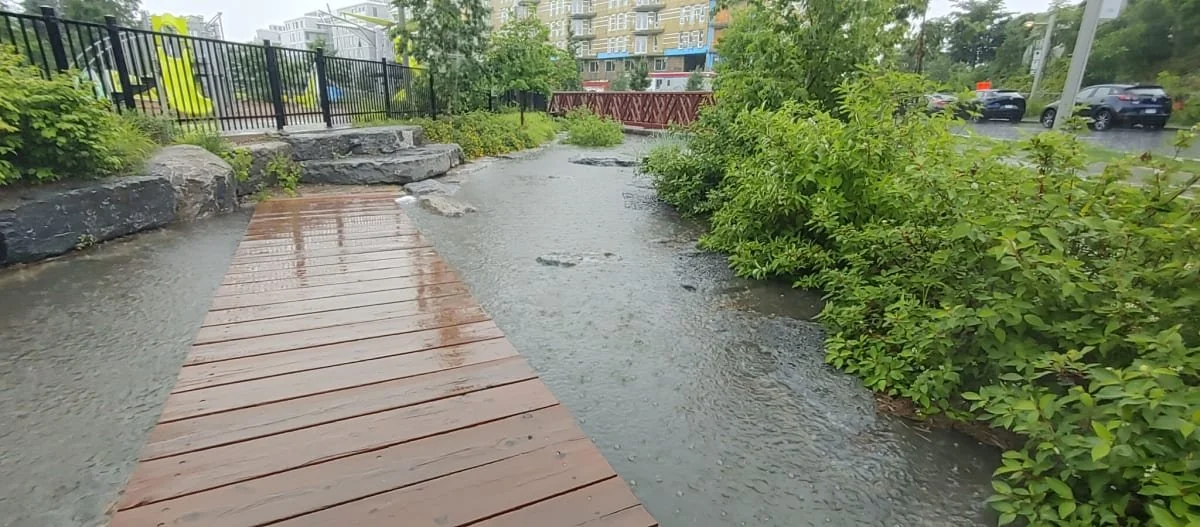Layers of Swiss Cheese to Manage Climate Risks
The Swiss Cheese model is a helpful way to understand how communities can build resilience against unpredictable and overlapping climate risks. Originally created to show how accidents happen in complex systems, the Swiss Cheese model reminds us that no single layer of protection is perfect: each one has holes, gaps where failures can occur.
The Swiss Cheese model for accident prevention. Source: Ben Avelig
If you stack several imperfect layers, the holes are less likely to line up. This means the chances of a threat breaking through all defenses become significantly smaller. Let’s look at urban flood management as an example.
The Swiss Cheese Approach to Flood Risk
In the face of prolonged and intense storms, experience shows that no single, perfect solution will prevent flooding. Canadian communities like Montreal and Ottawa are adopting multiple overlapping strategies to reduce the risk. This brings the Swiss cheese model to life:
Supporting Property Owners: Municipalities can assist homeowners at risk of flooding through subsidies for adaptation measures like permeable pavers and advice for decreasing vulnerability, for example in homes with counter-slope garage entrances. This also applies to reviewing new developments for flood risk and taking mitigative actions.
Infrastructure Upgrades: Municipalities can use a combination of grey and green infrastructure to create a Swiss Cheese of layers of protection within the storm control system. Green laneways and bioswales allow rainwater to soak into the ground rather than run off into storm drains. Storm drains themselves can be upgraded to store and release water more effectively.
Overflow Protection: When all else fails, engineered overflow zones can offer parks or even roads designed to serve as emergency conveyance routes, as a final safety valve. These features accept the excess water, directing it away from homes and critical infrastructure.
Grey and green stormwater control in Montreal. Image: Ville de Montreal.
Each measure on its own might not prevent a flood. But together, like slices of Swiss cheese with staggered holes, they provide redundancy, flexibility, and depth—key ingredients in a climate-resilient system.
Moving Beyond Floods: Where Else Can We Apply It?
The Swiss cheese model isn't limited to water management. It’s a valuable mindset for any climate-related challenge:
How might multiple layers help manage wildfire risk in rural communities?
What overlapping protections could reduce heat stress in urban areas?
Could food systems or energy grids be designed with more fail-safes using this layered approach?
Resilience doesn’t come from perfection—it comes from preparation, and from accepting that every system has limits. The more thoughtful layers we add, the more robust our communities become.
We’d love to hear your thoughts: How could the Swiss cheese method be applied to other climate risks in your community or sector?
Share your ideas below or join the conversation with UrbanRe on LinkedIn.



